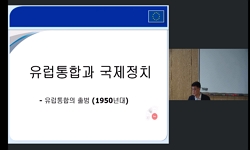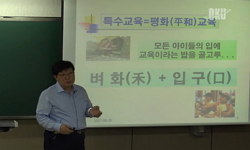The task given to the author is 'Can Ganhwa-seon and Vipassana exist togeter?' On this question I made two judgments; They should or can exist together. First, the tradition of Vipassana is very important in the study of modern Buddhism and the signif...
http://chineseinput.net/에서 pinyin(병음)방식으로 중국어를 변환할 수 있습니다.
변환된 중국어를 복사하여 사용하시면 됩니다.
- 中文 을 입력하시려면 zhongwen을 입력하시고 space를누르시면됩니다.
- 北京 을 입력하시려면 beijing을 입력하시고 space를 누르시면 됩니다.
https://www.riss.kr/link?id=A104611692
-
저자
인경 (동방대학원대학교)
- 발행기관
- 학술지명
- 권호사항
-
발행연도
2012
-
작성언어
Korean
-
주제어
간화선 ; 위빠사나 ; 통합 ; 알아차림(sati) ; 화두의 참구 ; Ganhwa-seon ; Vipassana ; accommodate ; sati(mindfulness) ; hwadoo Investigation.
-
등재정보
KCI등재
-
자료형태
학술저널
-
수록면
65-93(29쪽)
-
KCI 피인용횟수
6
- DOI식별코드
- 제공처
-
0
상세조회 -
0
다운로드
부가정보
다국어 초록 (Multilingual Abstract)
Second, a person should choose one asceticism method for meditation; however, there is a possibility that Ganhwa-zen and Vipassana can be consolidated. There are cases that prove this possibility such as Monk Bojo-jinul (普照知訥), Monk Naong (懶翁和尙 惠勤) and Zen-master Hanam (漢巖禪師) in Korea. The cases of Monk Mengshan-deyi (夢山德異) and Monk Zhong-feng (中峰), who was a disciple of Monk Gao-feng (高峰), in China are reviewed from the perspectives of Mind-character Theory and Practice Theory. The conclusion was that Ganhwa-seon ascetics accommodate most of sati(念, mindfulness) in early Buddhism and they understand sati based on Buddhadhatu thinking in interpretation.
Third, from the perspective of Mind-character Theory, Ganhwa-seon succeeded the Emptiness Theory of early Mahayana Buddhism based on non-permanence and absence of ego thinking in early Buddhism and it consequently found a relation that leads to Buddhadhatu and spirituality. Especially, it is definitely important that Mind-character Theory pointed out that the Emptiness Theory on being completely empty in Korean Ganhwa-zen tradition can fall into unanswerable question.
Fourth, from the perspective of Practice Theory, the historical cases on the issue of combining sati of early Buddhism and Ganhwa-seon’s hwadoo Investigation, asceticism method in Korean Buddhism which meditates on specific topic are given. Especially, a combining method of sati and hwadoo, meditation topic is created by taking the method suggested in the Buddhist prayer topic of Mengshan-deyi as a good model of consolidation. It is also suggested that the satipattanasutta(念處經) can be an important scripture and teaching basis for Ganhwa-seon. The case of Zhong-feng in Yuan Period (元朝), who took sati asceticism as the basis of Ganhwa-seon meditation topic, was also reviewed.
These historical cases are significant in providing with methods, in which Vipassana and Ganhwa-zen can exist together. It is possible that the Vipassana ascetics may not welcome this view, because Ganhwa-zen absorbed Vipassana in these cases. However, it is unavoidable because Vipassana had been an earlier asceticism than Ganhwa-zen in the history. The areas of sati, clear knowing and wisdom in Vipassana are the spirituality area and they are connected to the Buddhadhatu thinking in Mahayana Buddhism.
Therefore the enlightenment of Ganhwa-seon is circulative be cause it helps and can be applied on the asceticism theory of early Buddhism. In any case, what the author emphasized here is that Vipassana and Ganhwa-seon share historical cases together and they can be also shared in asceticism.
The task given to the author is 'Can Ganhwa-seon and Vipassana exist togeter?' On this question I made two judgments; They should or can exist together. First, the tradition of Vipassana is very important in the study of modern Buddhism and the significance of it should not be underestimated. Ganhwa-seon survived since the Joseon Period when the teaching system in Buddhism had fallen down; however now a time has come when Ganhwa-seon should look for a change. Ganhwa-seon and Vipassana have different area and method from each other; therefore Ganhwa-seon and Vipassana should advance in complementary relationship keeping both of them, instead of criticizing each other. The area of Vipassana is the area of body and mind. On the other hand, the area of Ganhwa-seon is the area of spiritual Buddhadhatu(佛性). Since the areas are different from each other, there is no reason to reject each other. The areas of them are to advance with complementary relationship, rather than excluding or attacking each other.
Second, a person should choose one asceticism method for meditation; however, there is a possibility that Ganhwa-zen and Vipassana can be consolidated. There are cases that prove this possibility such as Monk Bojo-jinul (普照知訥), Monk Naong (懶翁和尙 惠勤) and Zen-master Hanam (漢巖禪師) in Korea. The cases of Monk Mengshan-deyi (夢山德異) and Monk Zhong-feng (中峰), who was a disciple of Monk Gao-feng (高峰), in China are reviewed from the perspectives of Mind-character Theory and Practice Theory. The conclusion was that Ganhwa-seon ascetics accommodate most of sati(念, mindfulness) in early Buddhism and they understand sati based on Buddhadhatu thinking in interpretation.
Third, from the perspective of Mind-character Theory, Ganhwa-seon succeeded the Emptiness Theory of early Mahayana Buddhism based on non-permanence and absence of ego thinking in early Buddhism and it consequently found a relation that leads to Buddhadhatu and spirituality. Especially, it is definitely important that Mind-character Theory pointed out that the Emptiness Theory on being completely empty in Korean Ganhwa-zen tradition can fall into unanswerable question.
Fourth, from the perspective of Practice Theory, the historical cases on the issue of combining sati of early Buddhism and Ganhwa-seon’s hwadoo Investigation, asceticism method in Korean Buddhism which meditates on specific topic are given. Especially, a combining method of sati and hwadoo, meditation topic is created by taking the method suggested in the Buddhist prayer topic of Mengshan-deyi as a good model of consolidation. It is also suggested that the satipattanasutta(念處經) can be an important scripture and teaching basis for Ganhwa-seon. The case of Zhong-feng in Yuan Period (元朝), who took sati asceticism as the basis of Ganhwa-seon meditation topic, was also reviewed.
These historical cases are significant in providing with methods, in which Vipassana and Ganhwa-zen can exist together. It is possible that the Vipassana ascetics may not welcome this view, because Ganhwa-zen absorbed Vipassana in these cases. However, it is unavoidable because Vipassana had been an earlier asceticism than Ganhwa-zen in the history. The areas of sati, clear knowing and wisdom in Vipassana are the spirituality area and they are connected to the Buddhadhatu thinking in Mahayana Buddhism.
Therefore the enlightenment of Ganhwa-seon is circulative be cause it helps and can be applied on the asceticism theory of early Buddhism. In any case, what the author emphasized here is that Vipassana and Ganhwa-seon share historical cases together and they can be also shared in asceticism.
국문 초록 (Abstract)
개인적인 수행의 관점에서 보면 내적으로 양자가 어떻게 통합이 가능할까? 이런 통합의 역사적인 사례는 중국에서는 몽산덕이의 염불화두법이나 고봉의 제자인 중봉의 경우가 있고, 한국선의 전통에서는 보조지눌, 나옹화상, 한암 선사가 보여주는 공적영지(空寂靈知)에 기초한 화두참구의 과정이 좋은 사례를 제공한다. 공적영지의 심성론에 기초한 화두참구는 2단계로 구별된다. 화두참구를 통해서 제1단계는 공적을 체득하고 제2단계는 영지의 불성으로 나아간다. 한국 간화선의 전통에서 ‘텅 비어있음’에 대한 공사상은 ‘무기(無記)’에 떨어질 수 있음을 지적한 부분은 매우 중요하다. 위빠사나 수행이 강조하는 공이나 무아의 통찰은 영지의 불성체험에로 한걸음 더 나아가야할 이유가 여기에 있다. 구체적인 실천방법으로는 몽산덕이의 정토종과 임제종의 수행법을 통합한 ‘염불하는 이놈은 누구인가?’라고 염불화두법(念佛話頭法)을 원용하는 것이다. 위빠사나는 몸, 느낌, 마음, 현상을 관찰하는데, 이것을 ‘호흡(느낌, 마음, 현상)을 사띠하는 이놈은 누구인가?’라고 질문함으로써 「염처경」도 간화선의 중요한 하나의 경전, 교학적인 근거가 될 수 있음을 제시한다.
위빠사나 수행자의 입장에서 보면, 간화선이 중심이 되어서 위빠사나를 흡수한 사례라고 해서 별로 환영하지 않을 수도 있다. 교학의 역사적 진행에서 볼 때 무아, 공사상에 대한 통찰을 중시하는 위빠사나가 먼저이고 영지, 불성에 기초한 간화선이 나중에 나타난 수행론이다 보니 어쩔 수 없는 측면도 있다. 어쨌든지 본고에서 강조한 부분은 위빠사나와 간화선은 함께 공유된 역사적인 사례가 있고, 실제적으로 양자는 수행의 측면에서 함께 공유할 수 있다는 점을 강조한다.
간화선과 위빠사나에 대한 갈등적 관점을 상호보완적인 관점에서 논의를 진행한다. 그동안의 연구 성과는 양자를 비교하는 평론적인 연구가 주류를 이루었지만, 본고에는 실질적으로 양자...
간화선과 위빠사나에 대한 갈등적 관점을 상호보완적인 관점에서 논의를 진행한다. 그동안의 연구 성과는 양자를 비교하는 평론적인 연구가 주류를 이루었지만, 본고에는 실질적으로 양자가 어떻게 통합되는지를 보여주려고 노력한다. 초기불교 경전에 기반한 위빠사나 수행의 전래는 불교문화에 다양성을 제공한 점에서 의미가 있고, 조선시대 이후로 무너진 교학체계를 복원하는데 크게 기여한다고 본다.
개인적인 수행의 관점에서 보면 내적으로 양자가 어떻게 통합이 가능할까? 이런 통합의 역사적인 사례는 중국에서는 몽산덕이의 염불화두법이나 고봉의 제자인 중봉의 경우가 있고, 한국선의 전통에서는 보조지눌, 나옹화상, 한암 선사가 보여주는 공적영지(空寂靈知)에 기초한 화두참구의 과정이 좋은 사례를 제공한다. 공적영지의 심성론에 기초한 화두참구는 2단계로 구별된다. 화두참구를 통해서 제1단계는 공적을 체득하고 제2단계는 영지의 불성으로 나아간다. 한국 간화선의 전통에서 ‘텅 비어있음’에 대한 공사상은 ‘무기(無記)’에 떨어질 수 있음을 지적한 부분은 매우 중요하다. 위빠사나 수행이 강조하는 공이나 무아의 통찰은 영지의 불성체험에로 한걸음 더 나아가야할 이유가 여기에 있다. 구체적인 실천방법으로는 몽산덕이의 정토종과 임제종의 수행법을 통합한 ‘염불하는 이놈은 누구인가?’라고 염불화두법(念佛話頭法)을 원용하는 것이다. 위빠사나는 몸, 느낌, 마음, 현상을 관찰하는데, 이것을 ‘호흡(느낌, 마음, 현상)을 사띠하는 이놈은 누구인가?’라고 질문함으로써 「염처경」도 간화선의 중요한 하나의 경전, 교학적인 근거가 될 수 있음을 제시한다.
위빠사나 수행자의 입장에서 보면, 간화선이 중심이 되어서 위빠사나를 흡수한 사례라고 해서 별로 환영하지 않을 수도 있다. 교학의 역사적 진행에서 볼 때 무아, 공사상에 대한 통찰을 중시하는 위빠사나가 먼저이고 영지, 불성에 기초한 간화선이 나중에 나타난 수행론이다 보니 어쩔 수 없는 측면도 있다. 어쨌든지 본고에서 강조한 부분은 위빠사나와 간화선은 함께 공유된 역사적인 사례가 있고, 실제적으로 양자는 수행의 측면에서 함께 공유할 수 있다는 점을 강조한다.
참고문헌 (Reference)
1 이병욱, "천태의 4종삼매, 그리고 간화선․위빠사나" 6 : 2001
2 인경, "위빠싸나와 간화선" 보조사상연구원 19 : 4-162, 2003
3 송위지, "위빠사나와 간화선의 교집합적 접근" 6 : 2001
4 김재성, "위빠사나와 간화선, 다른 길 같은 목적" 19 : 2004
5 조준호, "위빠사나에 대한 몇 가지 오해" 19 : 2004
6 인경, "몽산덕이와 고려후기 간화선 연구" 불일출판사 2000
7 김형록, "명상심리치료 : 불교명상과 심리치료의 통합적 연구" 명상상담연구원 2012
8 각묵, "간화선과 위파사나, 무엇이 같고 다른가" 1 : 2003
9 이병욱, "간화선과 위빠사나의 비교" 44 : 2010
10 "漢巖一鉢錄"
1 이병욱, "천태의 4종삼매, 그리고 간화선․위빠사나" 6 : 2001
2 인경, "위빠싸나와 간화선" 보조사상연구원 19 : 4-162, 2003
3 송위지, "위빠사나와 간화선의 교집합적 접근" 6 : 2001
4 김재성, "위빠사나와 간화선, 다른 길 같은 목적" 19 : 2004
5 조준호, "위빠사나에 대한 몇 가지 오해" 19 : 2004
6 인경, "몽산덕이와 고려후기 간화선 연구" 불일출판사 2000
7 김형록, "명상심리치료 : 불교명상과 심리치료의 통합적 연구" 명상상담연구원 2012
8 각묵, "간화선과 위파사나, 무엇이 같고 다른가" 1 : 2003
9 이병욱, "간화선과 위빠사나의 비교" 44 : 2010
10 "漢巖一鉢錄"
11 "普照全書: 念佛要門, 修心訣" 勸修定慧結社文
12 "新華嚴經論"
13 "懶翁和尙語錄"
14 "山房夜話"
15 "宗鏡錄"
16 "天目中峯和尙廣錄"
17 "大寶積經"
18 "http://www.who.int/"
19 Maslow, A. H., "Religions, values, and peak experiences" Penguin 1976
동일학술지(권/호) 다른 논문
-
- 보조사상연구원
- 인경스님
- 2012
- KCI등재
-
- 보조사상연구원
- 이성운
- 2012
- KCI등재
-
- 보조사상연구원
- 김성옥
- 2012
- KCI등재
-
- 보조사상연구원
- 배경아
- 2012
- KCI등재
분석정보
인용정보 인용지수 설명보기
학술지 이력
| 연월일 | 이력구분 | 이력상세 | 등재구분 |
|---|---|---|---|
| 2023 | 평가예정 | 재인증평가 신청대상 (재인증) | |
| 2020-01-01 | 평가 | 등재학술지 선정 (재인증) |  |
| 2019-12-01 | 평가 | 등재후보로 하락 (계속평가) |  |
| 2016-01-01 | 평가 | 등재학술지 선정 (계속평가) |  |
| 2015-12-01 | 평가 | 등재후보로 하락 (기타) |  |
| 2011-01-01 | 평가 | 등재학술지 유지 (등재유지) |  |
| 2009-01-01 | 평가 | 등재학술지 유지 (등재유지) |  |
| 2006-01-01 | 평가 | 등재학술지 선정 (등재후보2차) |  |
| 2005-05-31 | 학술지명변경 | 외국어명 : BOJOSASANG, Journal of Bojo Thought -> Journal of Bojo Jinul's Thought |  |
| 2005-01-01 | 평가 | 등재후보 1차 PASS (등재후보1차) |  |
| 2003-01-01 | 평가 | 등재후보학술지 선정 (신규평가) |  |
학술지 인용정보
| 기준연도 | WOS-KCI 통합IF(2년) | KCIF(2년) | KCIF(3년) |
|---|---|---|---|
| 2016 | 0.62 | 0.62 | 0.65 |
| KCIF(4년) | KCIF(5년) | 중심성지수(3년) | 즉시성지수 |
| 0.67 | 0.53 | 1.608 | 0.46 |




 KCI
KCI






